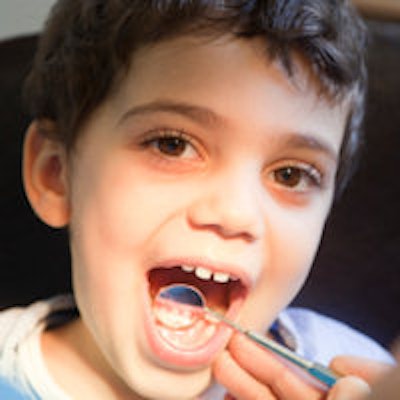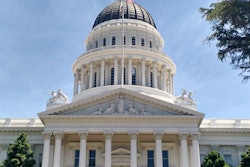
On May 16, about 175,000 undocumented children became eligible to enroll in California's dental Medicaid program, Denti-Cal, for the first time. But will the expansion swamp a program that's already overloaded and having trouble providing adequate oral healthcare?
 John Blake, DDS, dental director of the Children's Dental Health Clinic.
John Blake, DDS, dental director of the Children's Dental Health Clinic.A senate bill signed in June 2015 opened California's Medicaid program to every eligible child in the state, regardless of immigration status, with the goal of ensuring all children have access to health and dental care. Some stakeholders, however, wonder how many of these children will be able to receive care when about half of the 13 million kids already eligible for Denti-Cal don't see a dentist.
"It's going to put additional strain on a system that is already woefully underutilized," said John Blake, DDS, in an interview with DrBicuspid.com. "More people are looking for the same appointments." Dr. Blake is the dental director of the Children's Dental Health Clinic (CDHC) in Long Beach, CA, a nonprofit clinic that relies on Denti-Cal.
Repeatedly criticized
Denti-Cal has been repeatedly criticized for low reimbursement rates, low utilization rates, and time-consuming paperwork. In April 2016, the Little Hoover Commission, an independent state oversight agency, released a 68-page report on the problems plaguing the program, reiterating that 11 of California's 58 counties have no Denti-Cal providers taking new patients, and only about half of eligible children see a dentist annually.
 Denti-Cal accounts for only 1.4% of the Medi-Cal budget.
Denti-Cal accounts for only 1.4% of the Medi-Cal budget.Part of the problem is that Denti-Cal represents only a small percentage of California's Medicaid program, according to the commission's report. The 2015-2016 California budget allocated $91 billion to the Department of Health Care Services (DHCS) for its Medi-Cal program, the report noted. Out of that $91 billion, only $1.3 billion, or 1.4%, went to Denti-Cal.
"Denti-Cal's bureaucratic footprint, in short, is insignificant compared to other immense Medi-Cal responsibilities at DHCS," the report stated. "Advocates say this is a defining part of the problem with Denti-Cal --- a small program easily out of sight and out of mind within the larger healthcare bureaucracy in Sacramento."
In June 2015, Gov. Jerry Brown signed a bill, SB 75, which expanded the Medicaid program to children up to 19 years old, regardless of immigration status, but the implication for Denti-Cal was a relatively minor consideration.
While Denti-Cal may be tiny fraction of California's overall health policy concerns, the decision to expand care can radically impact dentists, like Dr. Blake, whose practices primarily consist of Denti-Cal patients.
When a business relies on Denti-Cal
In addition to running the Children's Dental Health Clinic, Dr. Blake is an advocate for improving access to oral healthcare for low-income Californians. While he's optimistic about the premise of more kids getting care, he's concerned that the new expansion will further stress California's dental Medicaid program. In fact, his clinic needs much more than just Denti-Cal revenue to get by.
“For us, it is not a good business decision to increase the ratio of Denti-Cal patients, and that's just strictly from a numbers standpoint.”
"The only way to make ends meet is that 50% of our revenue comes from donated sources, grants, individual donations. And that's just to kind of make a living in the Denti-Cal system" he explained. "For us, it is not a good business decision to increase the ratio of Denti-Cal patients, and that's just strictly from a numbers standpoint."
Since Dr. Blake's clinic is in Los Angeles County, he is already treating low-income children who didn't previously qualify for Medi-Cal through the My Health LA (MHLA) program. Before the recent expansion went into effect, 10% of Dr. Blake's patients were part of MHLA. The program uses the same fee schedule as Denti-Cal, but it is much easier to work with than Denti-Cal, according to Dr. Blake.
"They don't have the same requirements for preauthorizations that Denti-Cal does," he said. "There was definitely some more audits and regulatory hoops to jump through working with MHLA, but once we checked all those boxes, the system itself was much easier to bill or receive reimbursement for."
Although some of Dr. Blake's 20- and 21-year-old patients will still be covered by MHLA, most former MHLA patients will switch to Denti-Cal, making his practice about 95% Denti-Cal. Dr. Blake anticipates his practice's expected revenue will be similar, but the paperwork process will consume more precious time. He's hoping to offset any demand increase with expanded development efforts and maximizing residency training programs within his clinic.
"Where it looks like great, all of the children essentially would be covered if they're eligible ... that's only going to further expose that there are inadequacies in the provider network," Dr. Blake said. "I'm trying to be very pragmatic working within a system that is fairly well broken."
And if the system is in fact broken, and increasing the number of children enrolled in the program will only exacerbate existing problems, then perhaps a multimillion dollar investment in California's dental Medicaid program is the solution.
Part two of this series will discuss the Department of Health Care Service's $740 million, five-year plan to rethink the troubled system.
What is it like to run a practice that depends on Denti-Cal? Dr. John Blake shares his experience and thoughts in the video below.



















